The digestive system
The Mouth–digestion starts:
- Digestion refers to the process whereby food is dissolved or broken down into simpler substances by the use of enzymes (Sherwood, 2010).
- The process of digestion takes place in the digestive tract which runs from the mouth to the anus.
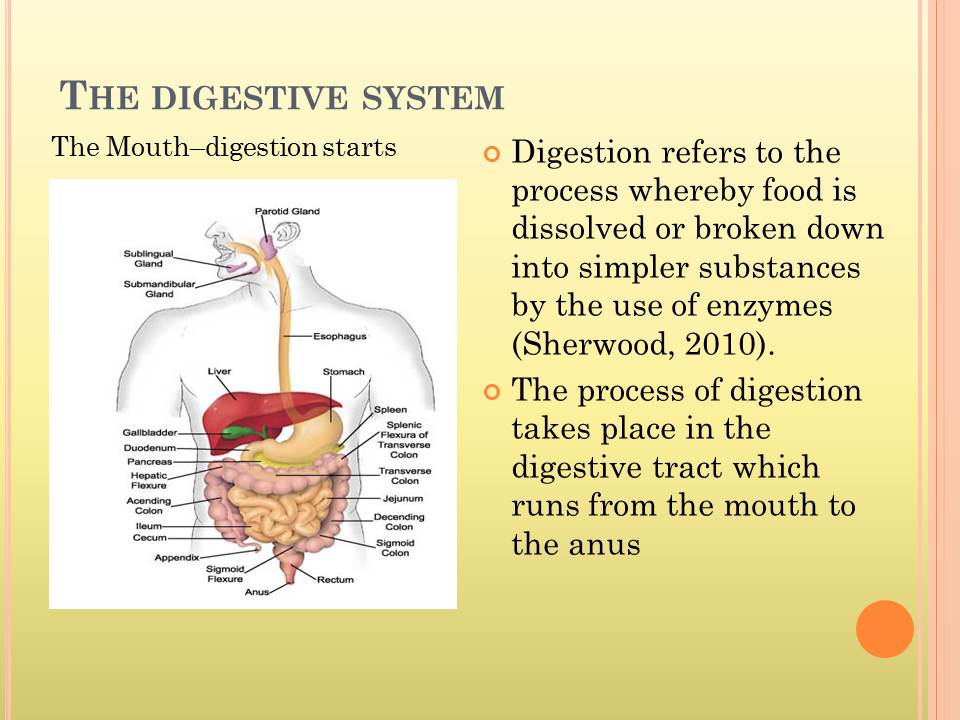
The Mouth
- The mechanical breaking of food substances begins from the mouth.
- Apart from this breakdown, the saliva that is released from salivary glands assists in the digestion of starch since it contains essential enzymes.
- Food is lubricated and dissolved using saliva (Faller et al.2004).
Hence, the mouth plays two main roles namely releasing of saliva that contains digestive enzymes as well as lubrication process and also breaking down food into smaller pieces that can be swallowed easily.
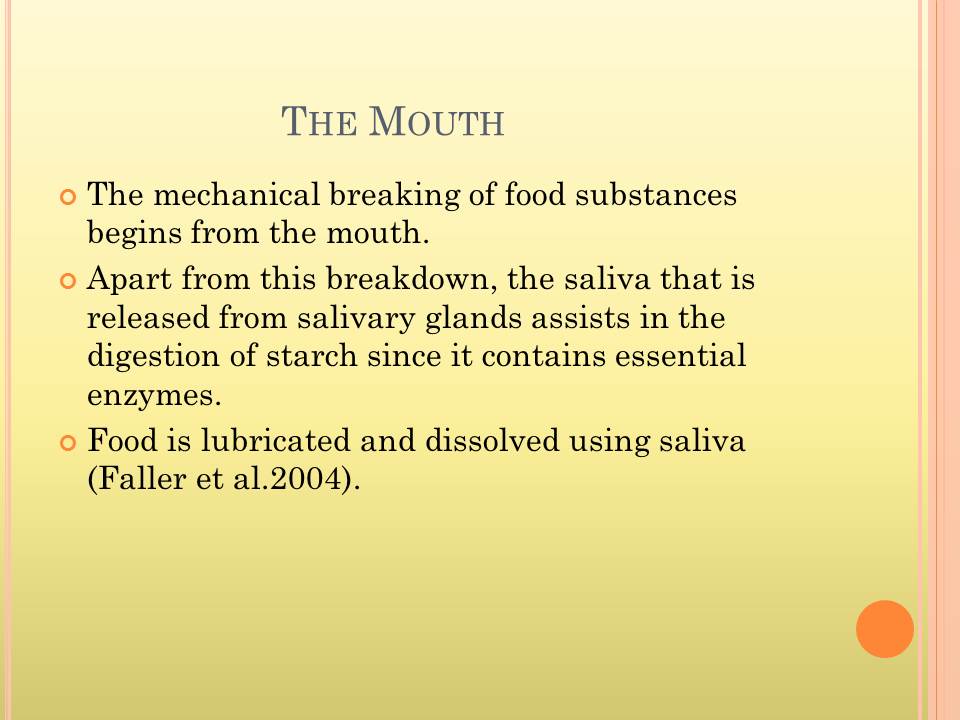
Esophagus
- Esophagus connects the moth and stomach.
- Food substances that have been broken down in the mouth is then swallowed and finds its way In the esophagus.
- This is a narrow tube that connects the mouth and stomach hence its main role is to act as a passage for food to the stomach through the muscle action.
Gravity does not play any significant role in the process of swallowing food (Morrison, 2001).
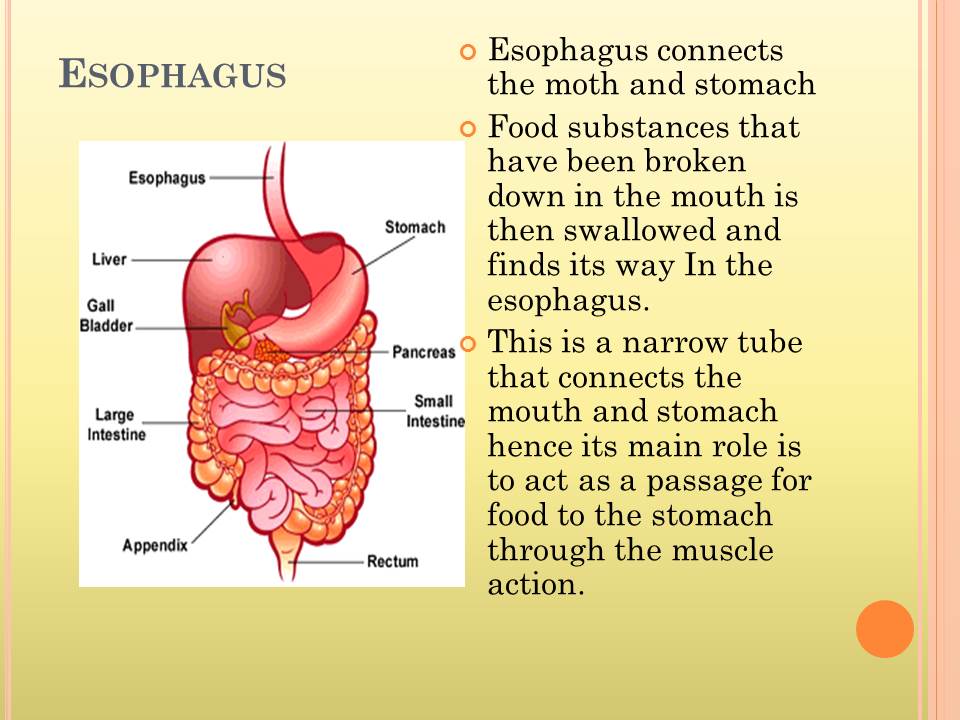
The Stomach- temporary food store
The smaller food molecules eventually enter the stomach. One of the most important functions of the stomach is to store food on a temporary basis. Food mixes with plenty of water and other fluids and after it has been liquefied, it is passed on to ileum, the small intestine.
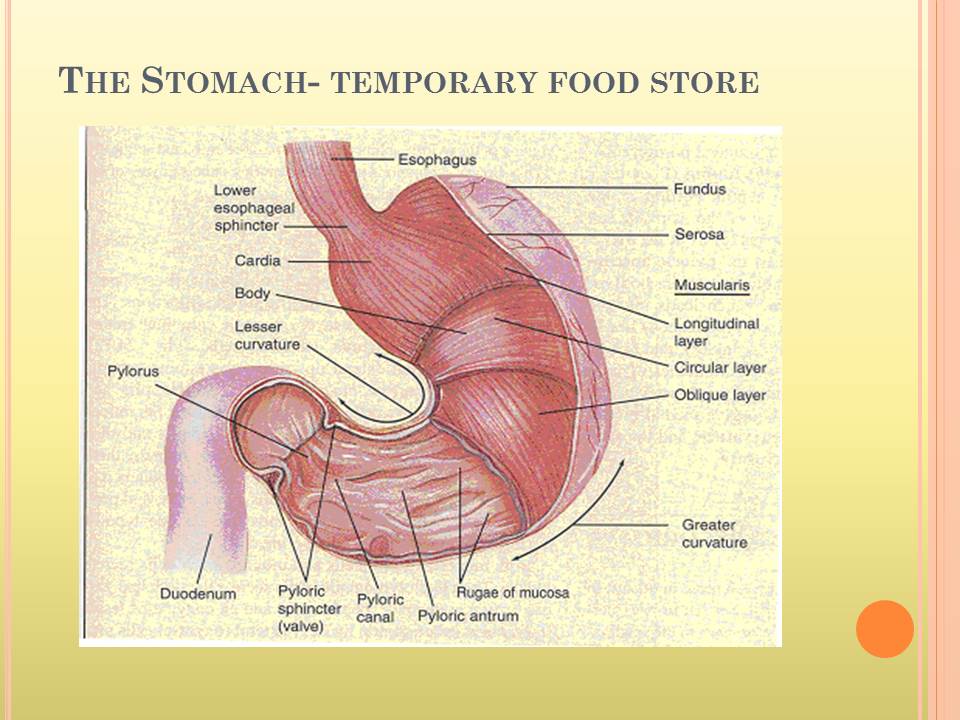
The Stomach
- The stomach stores food shortly awaiting protein digestion.
- The function of the stomach is in breaking down of protein molecules.
- There are quite a number of enzymatic secretions in the stomach that perform various roles.
- For instance, gastric juice secreted in the stomach assists in protein digestion.
In addition, hydrochloric acid is a major stomach secretion that boosts the working of enzymes. The acidic nature of the stomach is also instrumental in preventing foreign bodies such as bacteria and amoeba that may be hazardous to human health. Thse forein microorganisms are capable of entering the stomach through the food taken in the mouth. Most of the harmful bacteria are killed by the acidic environment of the stomach. Food leaves the stomach in form of a liquid ready to be absorbed as nutrients right in the small intestine. At this point, the liquefied food substance is referred to as chyme (Sherwood, 2010). This is a mixture of food articles, saliva, water, fat droplets, mucus from stomach walls and enzymatic secretions. Very minimal absorption of these substances takes place in the stomach. Only small amounts of water and alkanol can pass through the stomach wall.
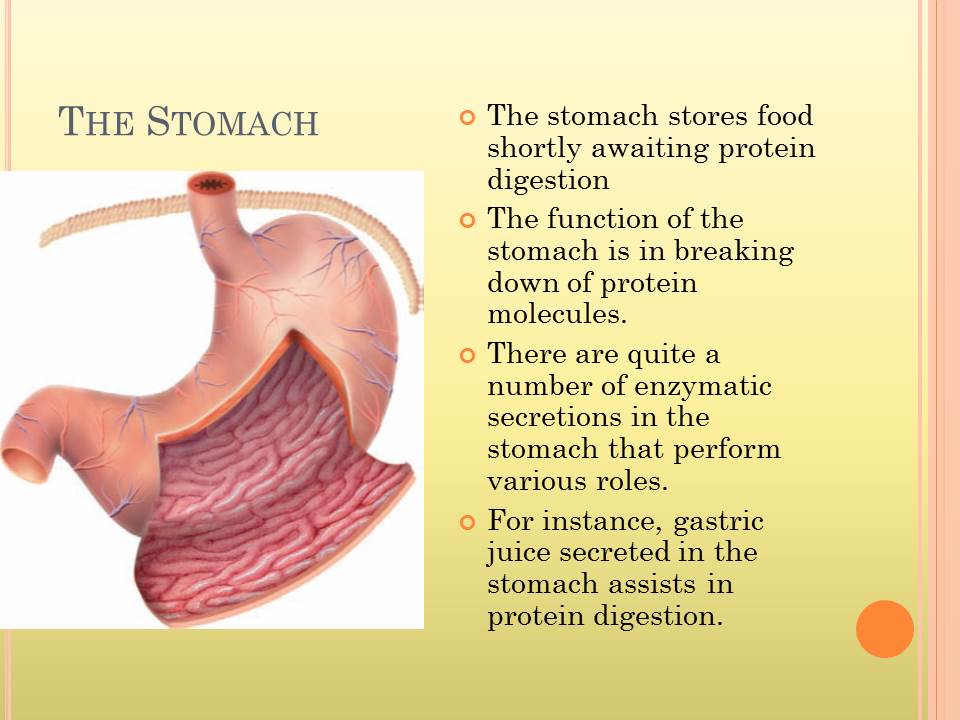
The Small Intestine
- Also called ileum and attached to the stomach.
- Waves occasioned by the contractions of the muscles push the liquefied food (chyme) into the small intestine.
- These muscle contractions emanating from the stomach is called peristalsis. The pyloric valve permits small amounts of liquefied food into the small intestine.
However, chyme that may not pass through the valve is pushed back by peristalsis so that it can be mixed thoroughly by the stomach before eventually finding its way to the small intestine. The massive absorption of food nutrients takes place through the intestinal walls. The dismantlement of proteins, carbohydrates and proteins takes place here. Besides, lipids are also absorbed in the small intestine.
After the disintegration of food substances in the ileum, amino acids and sugars are generated as nutrient products of proteins and carbohydrates respectively while glycerol is a product of fats (Starr & McMillan, 2010). These processes takes place courtesy of the enzymes that are secreted from two major glands namely the liver and pancreas. Nucleic acid contained in food, carbohydrates, proteins among other food substances are broken down by pancreatic juice secreted from pancreas. The bicarbonate contained in this juice is basic in nature and is used to reduce acidity in the liquefied food from the stomach.
A combination off bile salts and the bicarbonate is also secreted in liver and assists in the breaking down of lipids. This salt secreted from liver emulsifies chyme making it easy for lipids to be digested.
After secretion, bile is not injected directly into ileum but is rather stored in gallbladder and is released through the bile duct when there is need to digest lipids in the small intestine (Hoffmanmont, 2009).
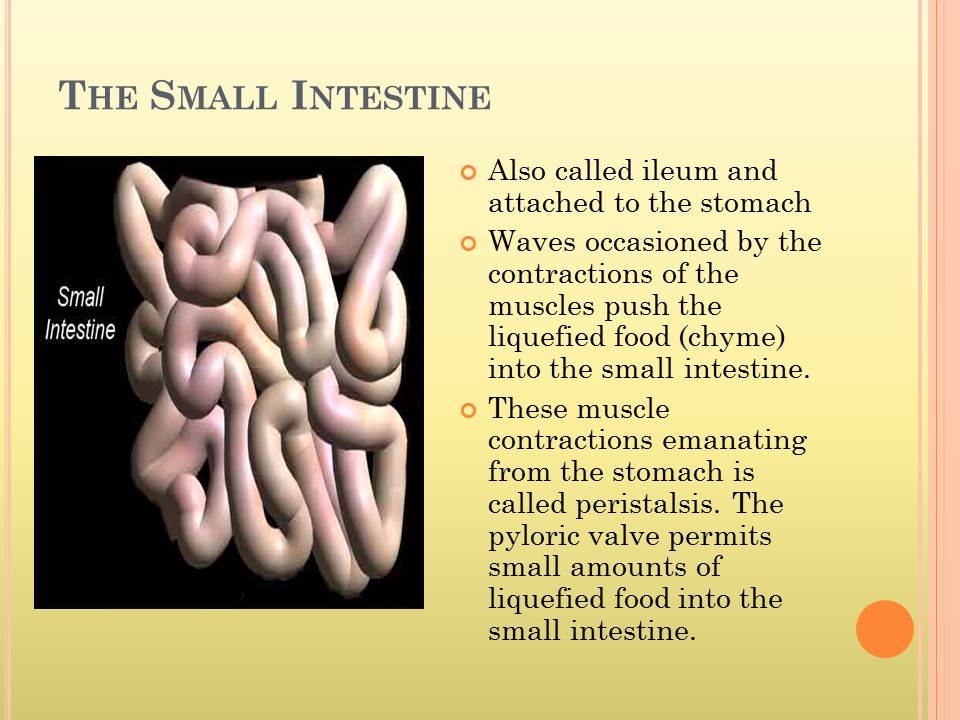
The Large Intestine
- Connects the small intestine and rectum.
- The food material that eventually reaches the end of ileum, it cannot be digested.
- This remaining stuff is dumped into the large intestine. This section of the digestive system is about five feet long.
- The basic role of the large intestine, is to act as the storage point for feces (Starr & McMillan, 2010).
It also absorbs water and mineral salts that are still in the end material. As a result, it assists in regulating the balance of fluid in human body. In addition, there are vitamins that are absorbed through the walls of the large intestine. The remaining matter is then stored in the rectum and released from time to time through the anus in a process called defecation.
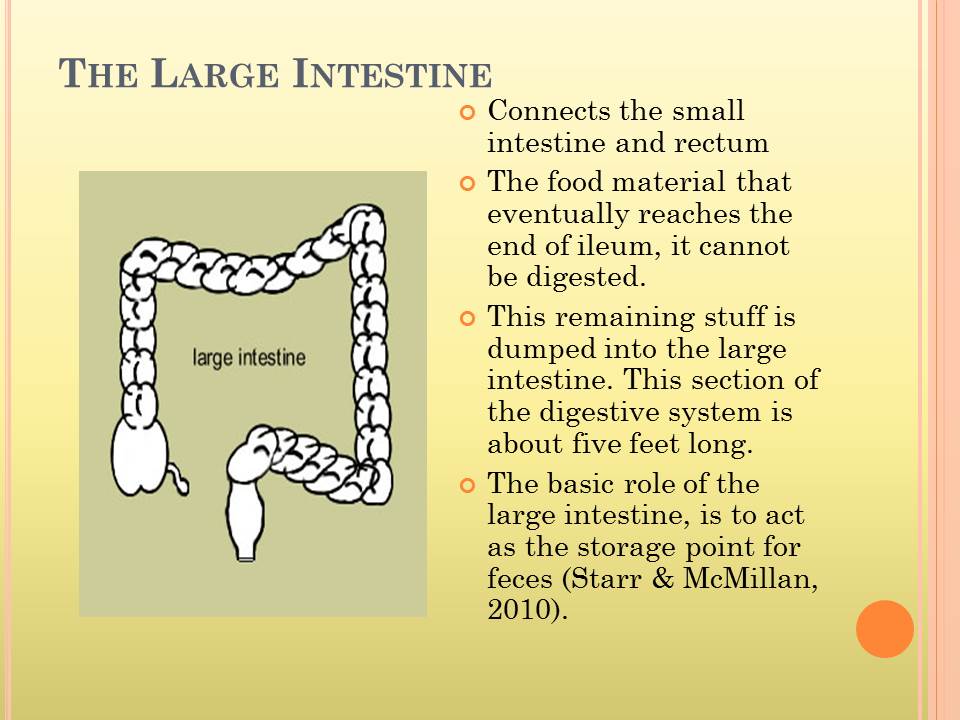
Relationship between the Digestive and Respiratory systems
The digestive system does not work independently but relies on the other physiological systems. For instance, the main function of the respiratory system is to regulate the oxygen and carbon dioxide balance in the body.
The rise in carbon dioxide levels leads to a drop in the pH of the blood (Faller et al., 2004).
Nonetheless, if ingested food acts as the source of hydrogen ions, then the balance between acids and bases will rely on the excretion of surplus hydrogen ions through the digestive system.
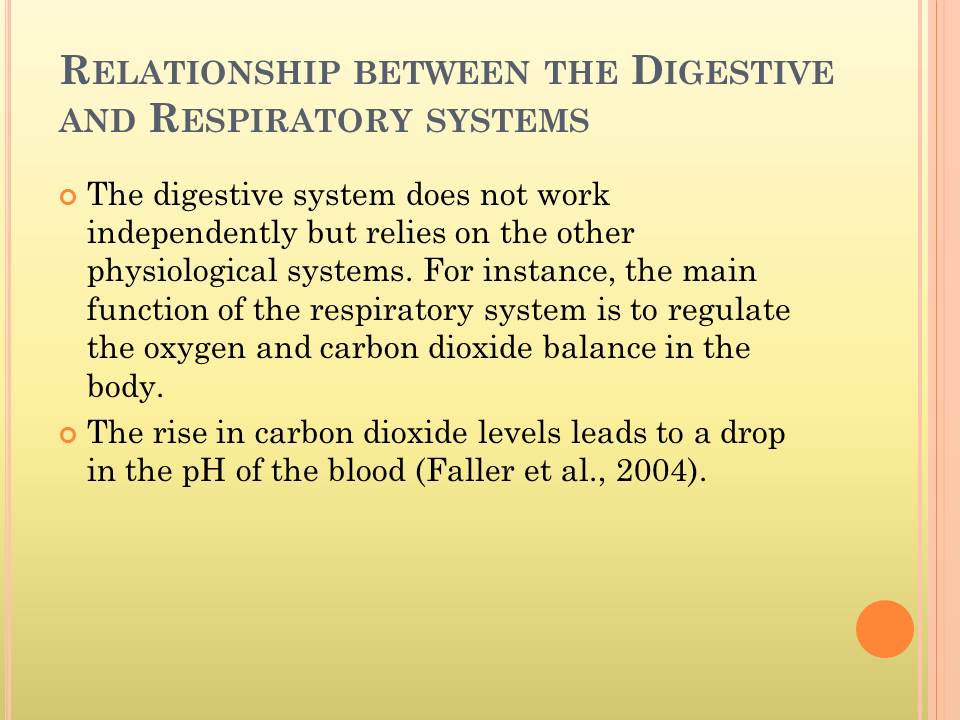
References
Faller,A. et al. ( 2004). The human body: an introduction to structure and function, New York: Georg Thieme Verlag.
Hoffmanmont, G. (2009). Digestive System, New York: Marshall Cavendish Corporation.
Morrison, B. (2001). The Digestive System, New York: Rosen Publishing Group Inc.
Sherwood, L. (2010). Human Physiology: From Cells to Systems, Belmont : Brooks/Cole , Cengage Learning.
Starr, C. and McMillan, B. (2010). Human Biology, Belmont: Brooks/Cole , Cengage Learning.